While the temptation of regenerative treatments flow abundantly in the Austrian Alps, visitors look the other way and seek out a new kind of healing.
At age 68, with a voluminous coif in a shade reminiscent of a melting snow, Ike Ikrath is overflowing with energy. So much so that he calls running a hotel his therapy.
Donning his usual Clark Kent rimmed glasses and expressive whimsy, he gestures to an Alvar Aalto’s Paimio lounge chair stationed neatly in a corner where newly arrived guests and those with trained eyes would spot it with ease.
“What are the odds?” I said quietly to myself. “My wobbly knees carelessly bumped into the chair in question returning from an early brisk walk this morning.” Perhaps the Paimio piece afterall serves a higher purpose.
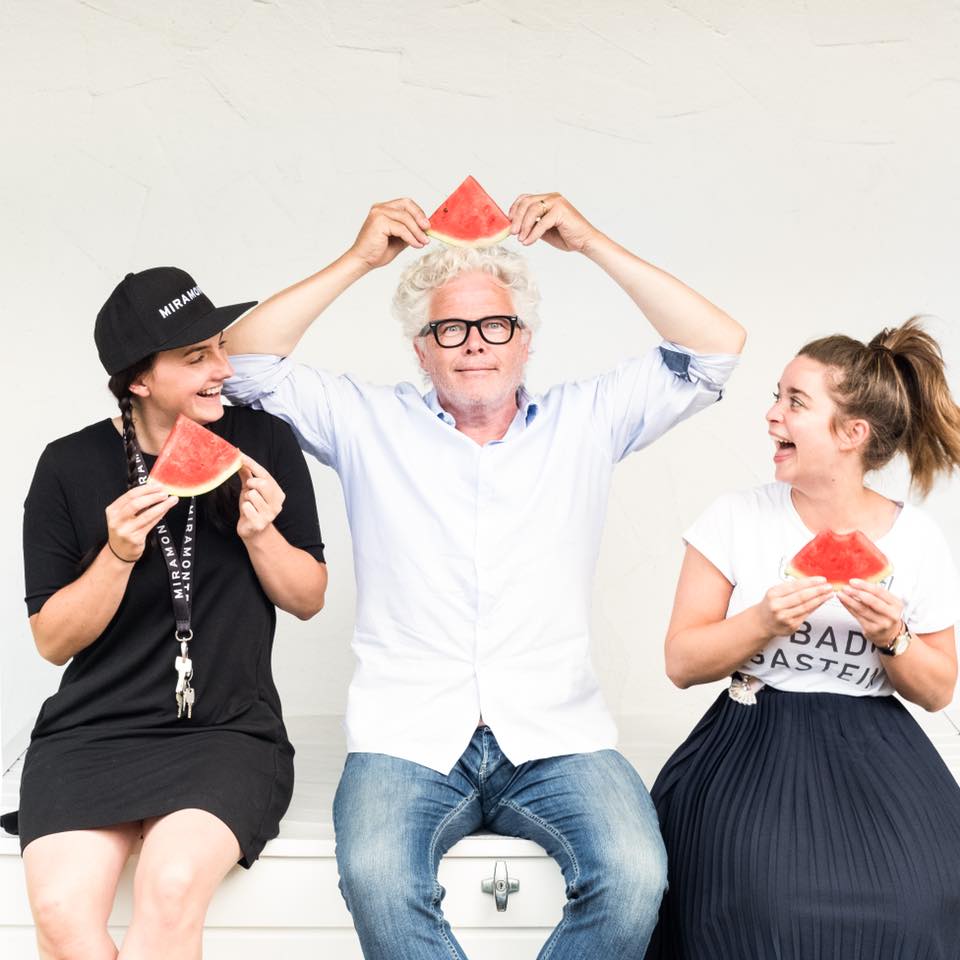
It’s only been a few minutes since we started chatting, waiting for the late July rain in Austria’s Bad Gastein to subside, when I began to notice Ike, in his architect kind of peculiarity, takes pleasure in describing things and their inner essences as a way to express his ideas.
Coincidence? I doubt. Intentional. Maybe. My thoughts moved back to Aalto’s chair again. As one of the most photographed in the planet and coveted objet d’art, armchair 41 embodies the late Finnish architect’s keenness to abate “the long and painful life” of patients housed in Finland’s tuberculosis sanitarium.
Around me are lush lofty evergreens, dripping whilst jabbing the afternoon Austrian mountain mist. If anything, my alpine admission is likely to be ‘fleeting and pleasurable’. As an all too familiar cliché would have it, time flies when you’re having fun.
I am starting to see the subtlety and slowly catching up on Ike’s therapeutic way in allowing his guests at the Hotel Miramonte to experience as well as to embrace one’s own version of Alpine cure.
On a precipitous tiered cliff of the Hohe Tauern mountain range of Austria, the town of Bad Gastein bear hugs this portion of the Alps. A waterfall gushes in the middle of town evoking a disney-like feel in a Wes Anderson backdrop.
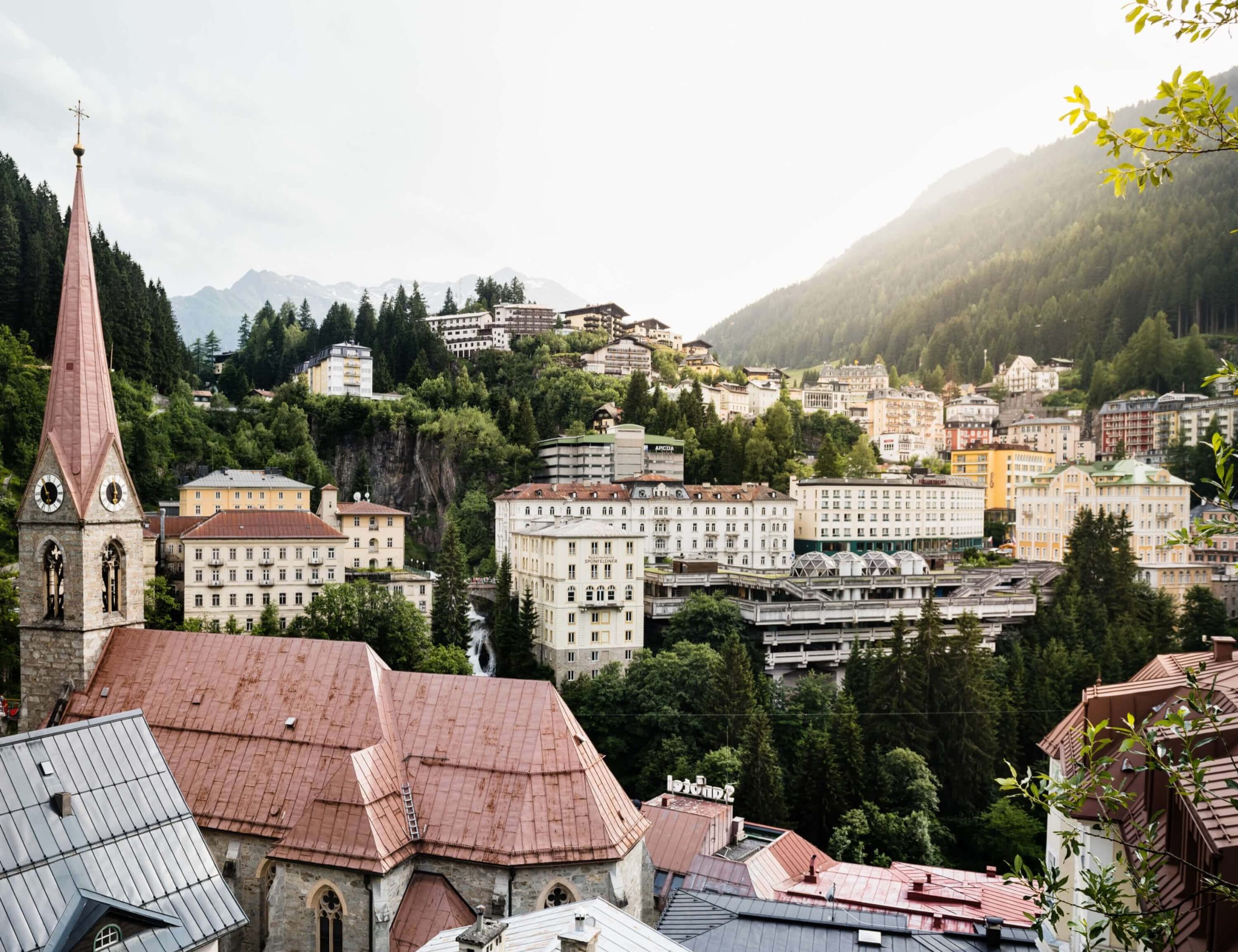

Gold was the only thing everyone could talk about when the town struck it rich in the 15th century. But it wasn’t for this earthly fortune that sent emperors, european aristocrats and statesmen packing en masse to Bad Gastein. Rather, the craze came from another earthly source – thermal springs. Since then, the town’s radon-rich water became its most prized possession enticing popes, musicians, scholars, glitzy celebrities and travelers far afield to dip themselves in the spring’s restorative powers.
Investments came pouring in along with new fangled ski facilities. However, tourism soon trickled in the late 60’s as spa culture began to lose its fizz. Many of Bad Gastein’s belle epoque properties took a hit from the increasing costs of the upkeep. Storefronts shuttered up. A number of hotels become empty shells of their former selves and lay dormant. The town, was as if it had pricked its finger on a spinning wheel and fell into a slumber.
“Bad Gastein is a place of possibility.” Ike tells me. “I’m fond of transformation and awakening the inner creativity.” It seems only natural for a painter’s son to find Bad Gastein an ideal canvas. As he would refer to it, a sandbox waiting to be shaken, stirred and shaped into something like a force of change.
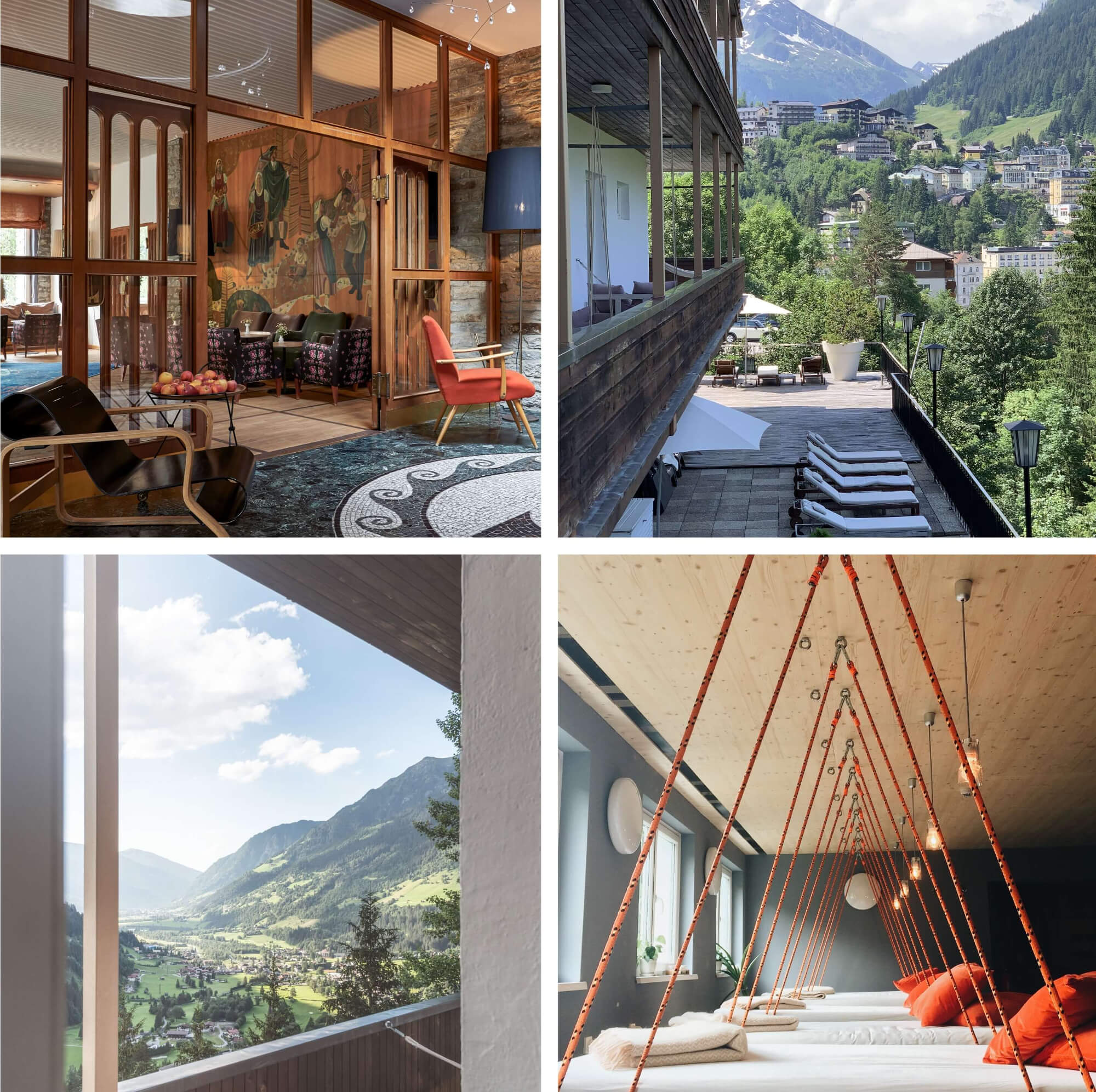

Joined by his wife Evelyn, who grew up in the area, they acquired an abandoned 1960’s bank on a steep slope overlooking the vast expanse of the Gastein Valley. With the support from other designer friends, the group transformed the tired building into a 36-room boutique hotel warmed by modernist artifacts that thrives in an ‘open space’ philosophy. A concept adopted from its older sister hotel, the Haus Hirt that Evelyn runs after inheriting from her parents.
Miramonte’s approach to ‘open space’ however, is more deliberate. One sees the presence of large communal dining tables with individual ones tucked away in cozy corners. Shared balconies come with outdoor hammocks as demarcation lines instead of walls, a spacious sun terrace that turns into an outdoor movie theater in the summer and an open fireplace in the colder months exuding kumbaya kinship. The less obvious reason, Miramonte in itself is a space that houses art, people and creative spirit.
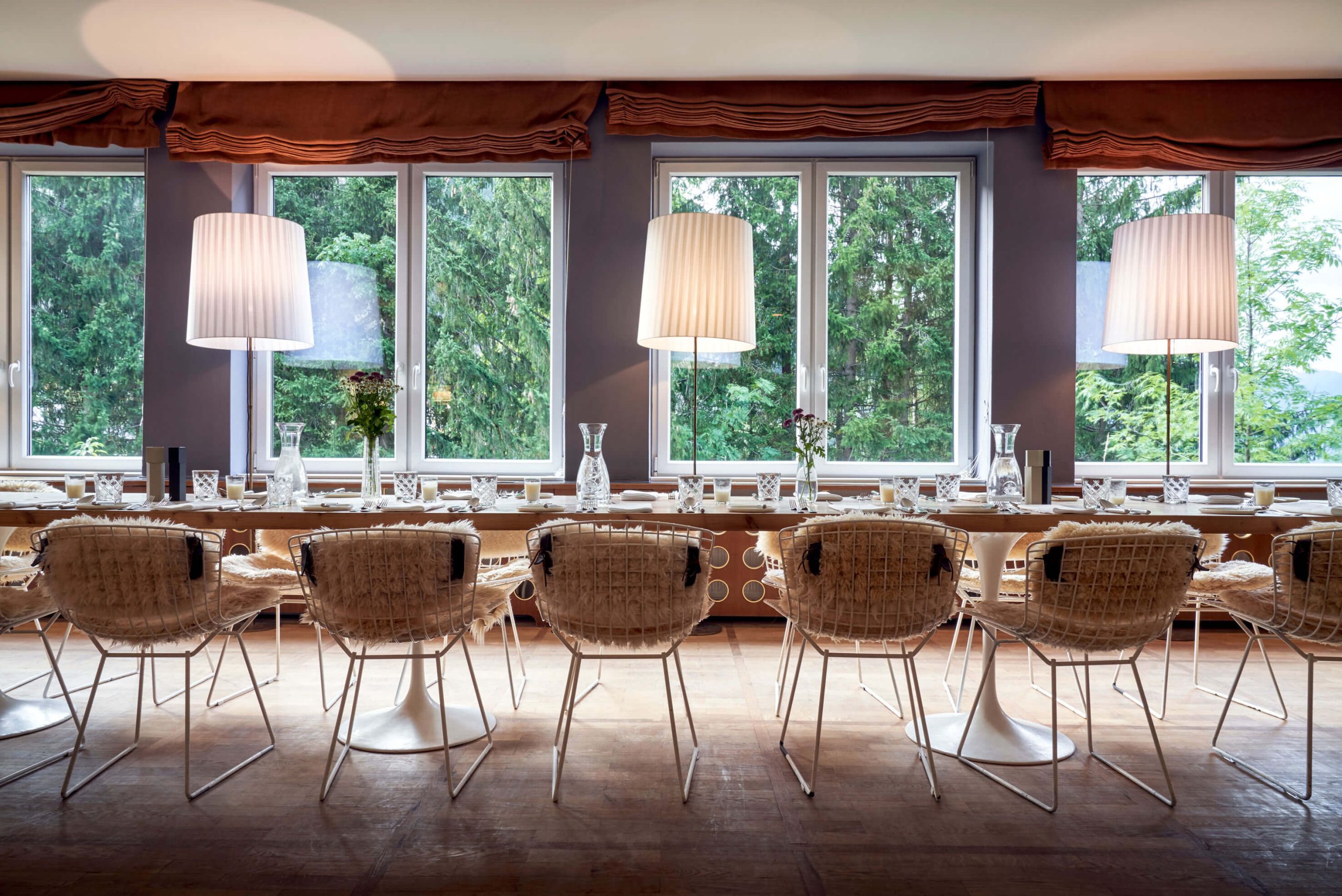



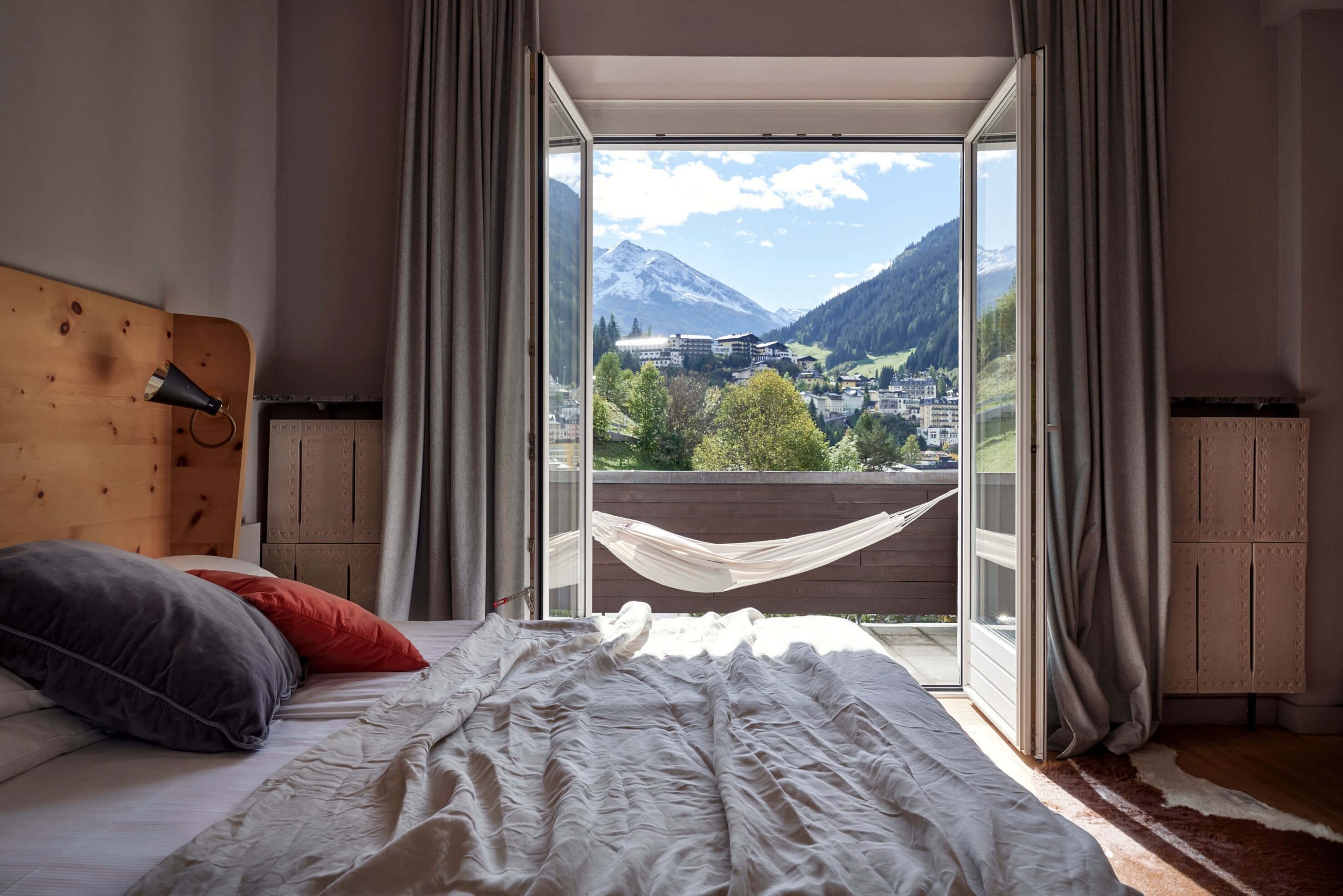

One of the most influential futurists in the German speaking world, Matthias Horx frequently spends time here. Contemporary Milan based designer Piero Lissoni, who also leads an architect firm in New York’s Soho district is a fan of the hotel as well as Germany’s famous hip hop artist and disc jockey Michi Beck. On several different occasions, Paul Strathern, the Scottish-Irish novelist and academic writer hopped between Miramonte and Haus Hirt only to leave a trail of his signed books behind, now a part of the hotel’s library collection.
The creative list balloons in the summer. Prominent and up-and-coming young artists from various parts of the globe take part in the town’s annual “Summer.Freshness.Art” festival that Ike launched twelve years ago, projecting Bad Gastein as the new artist’s playground.
Throughout the entire summer, the Gastein Valley undergoes a cultural high. In addition to art spaces, musical performances also take place in elevated altitude. Many of the artists hunker down for a week at Miramonte brushing elbows with fellow contemporary artists and regular guests.
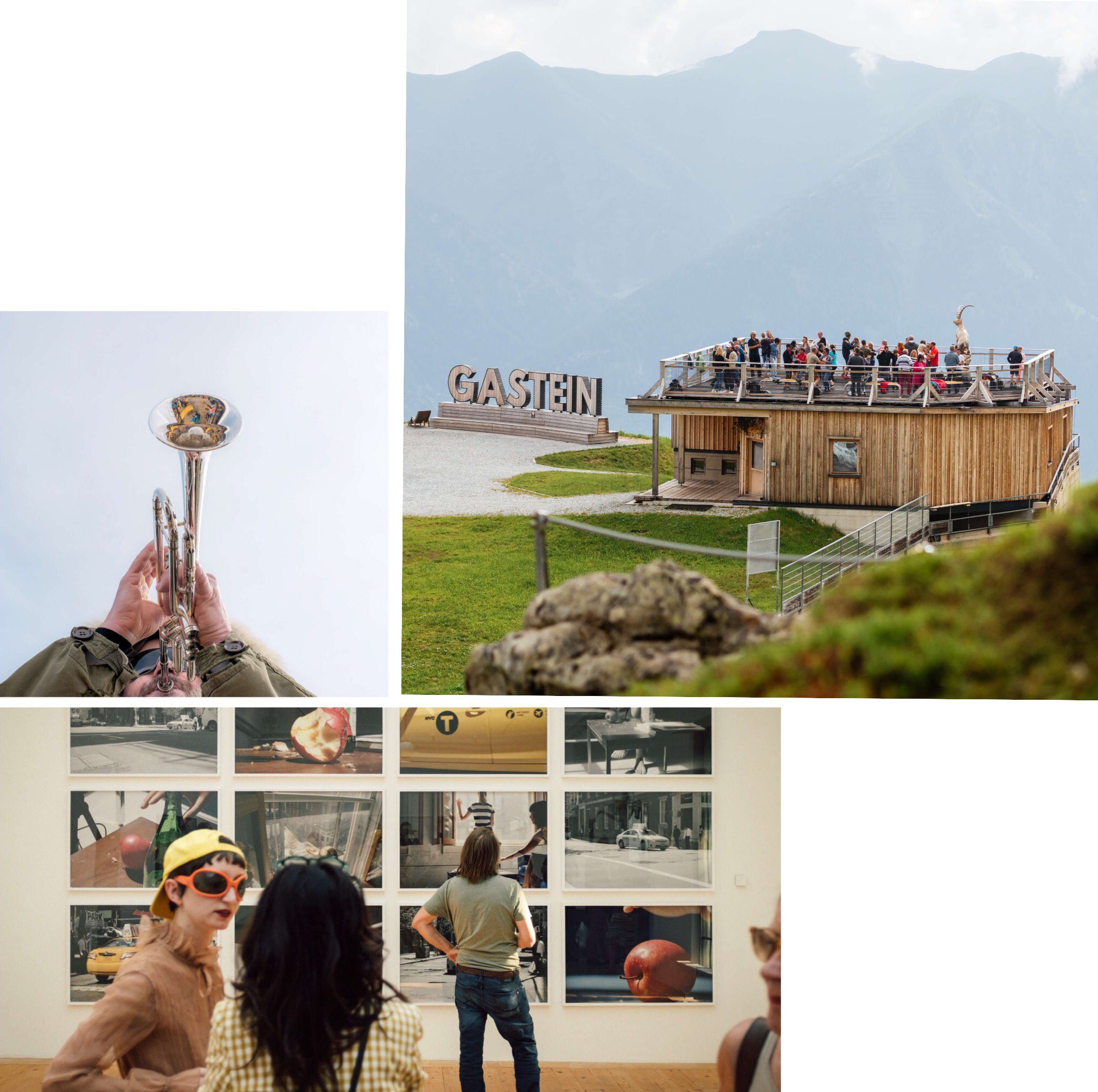

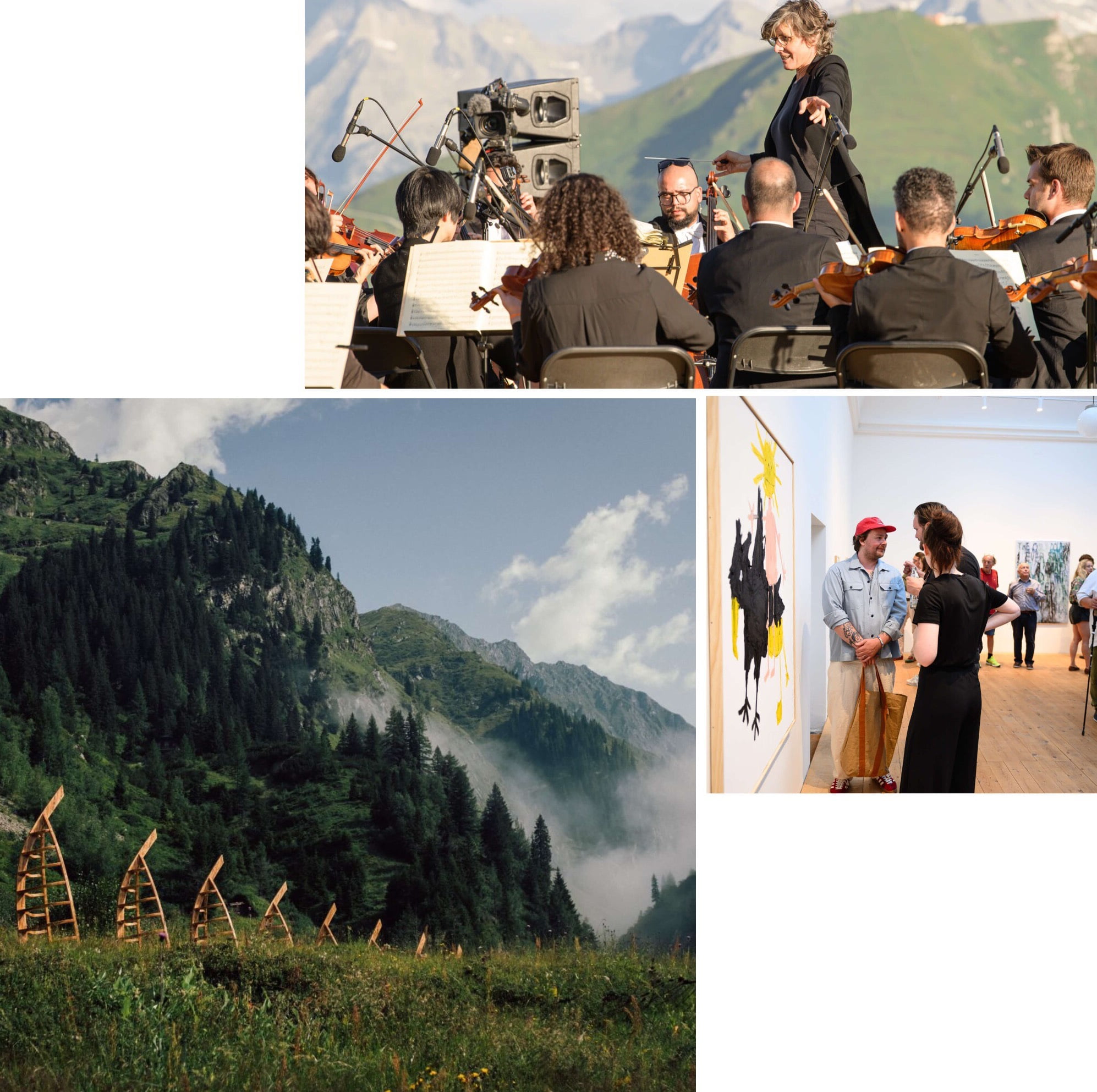

“I would like to think that art and other forms of creative mediums can ultimately be the new source of energy for Bad Gastein.” Ike quips. “Here at Miramonte, we lend artists the opportunity and ideal place to tune their creativity while relaxing in a therapeutic space.”
He was right. Creativity may just be the right antidote to lift Bad Gastein’s curse ‘old world for old people on low-budget cures’ once and for all.
When Ike tells you running a hotel is his therapy, it’s not as if he really needs one. Perhaps it’s his way of inviting the inner curiosity to bubble up to the surface while nudging the consciousness into finding the hotel as a form of therapy – those who are in search of inspiration and a different kind of cure altogether.
Miramonte which loosely translates to ‘admire the mountain’ is a homage to the landscape. In a more profound way, it can also be interpreted as ‘peace on the mountain’. ‘Mir’ being the Slavic word for ‘peace’ and the Italian ‘a monte’ as in ‘on a mountain’. What a truly fitting name for a hotel that embodies Bad Gastein’s rebirth and healing.


Do you see yourself visiting this part of Austria? Regardless of season, a trip to Bad Gastein promises an enriching and fulfilling alpine cure. I look forward to catching up with there sometime soon 😉
BUTTER MY BAGUETTE
This website made of love strives to produce FREE CONTENT.
Help me tell more stories and keep this website free of any advertisement by supporting Flying Baguette in inspiring more people and connecting you with other cultures and communities around the globe. Donate a little or as much as you can afford to keep the magic of Flying Baguette going for years to come. Share your support through the icons below ⬇️
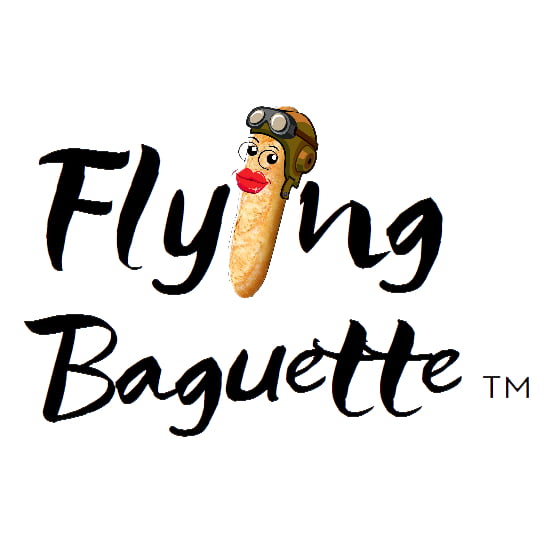





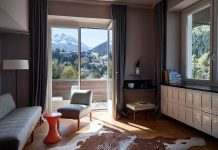
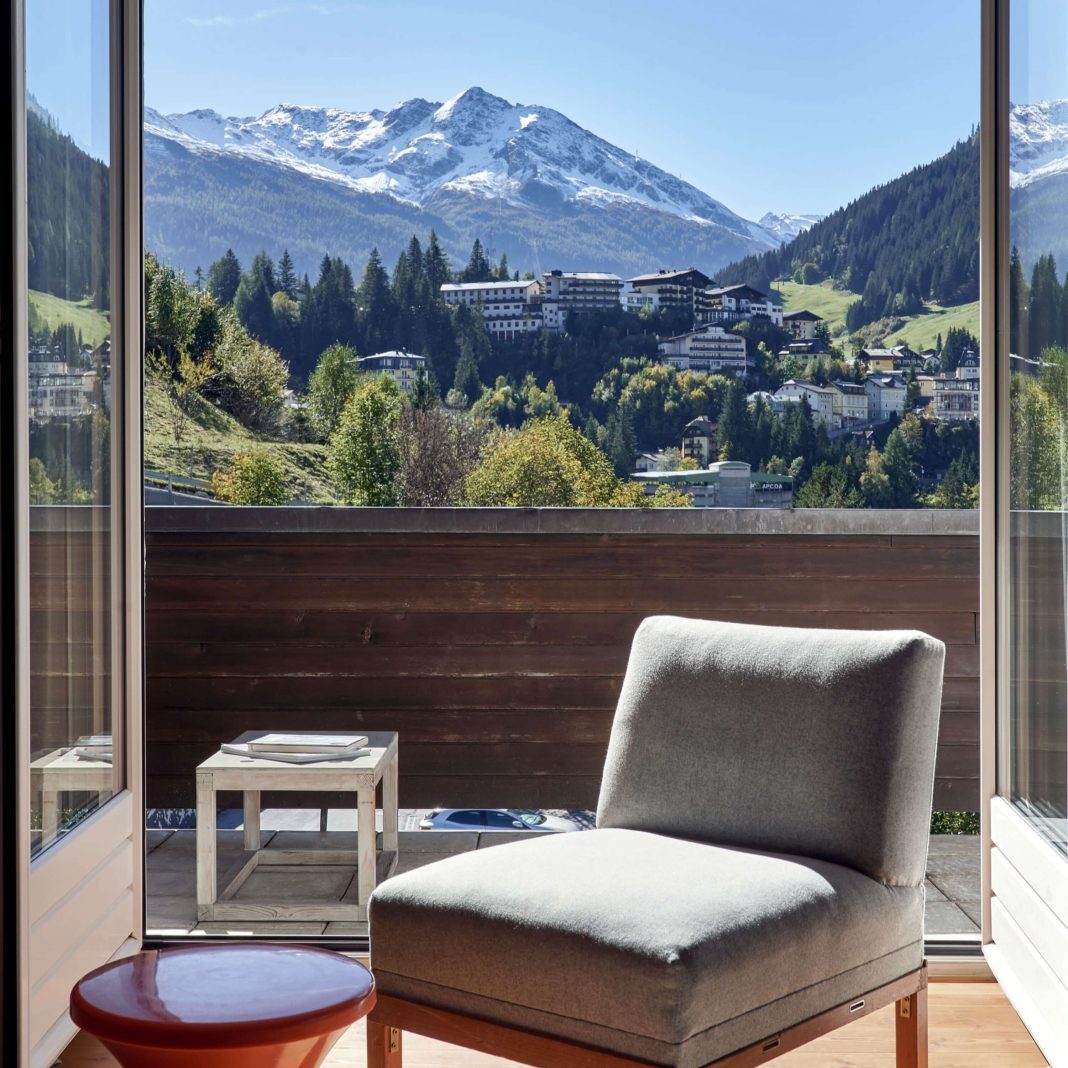

Sounds like a really cool place to stay. Love the hammocks on the balconys, terrace cinema, and open fireplace. I would love to be there for an art retreat one day. What a beautiful location!
How do you always find these gems!? Firstly, the town of Gastein look charming. Secondly, hotel Miramonte looks like such an inspiring place. I love the open concept, the views and what I could see from the spa!
It’s interesting to see that places to stay are increasingly associated with health and well-being, both physical and mental. The concept of regenerative tourism seems to be increasingly ingrained in the way we travel.
There is no doubt that combining a magnificent landscape with art increases our sense of well-being exponentially when we visit a place.
I love the décor, simple but with great charm!
Your descriptions are on point as this magical looking Disney-esque location with restorative spa roots is exactly the kind of town that would be a great place to relax. The art is a draw for sure, but for me it would be those views, and the relaxing ways to take them in. Including the hammock on the balcony
The view from the room is gorgeous – and I can only imagine being in the hammock on a beautiful warm day! I can definitely see how it’s a therapeutic place. There is so much to admire the mountain and creativity would definitely be inspired here.
Would you believe I have experienced radon baths and thermal springs for the first time in the last few weeks and it completely makes sense as to why it brought so many people to Badgastein. I never felt better after jumping in! The photos included are beautiful. It is nice to read of Ike’s pride and passion in running his hotel. I would love to experience a stay as I believe in community and having a strong sense of belonging. I completely agree “Love is all you need” and no doubt it can be found on this peaceful mountain ☺️
You’re right, Bad Gastein really looks as though it has been created as a Wes Anderson set! It looks delightful, utterly charming and how very lovely to have the waterfall a central feature of the town. It was fascinating to read about Miramonte’s history and ethos. Love the idea of the summer festivals with art and music, all amidst that gorgeous mountain backdrop. I love both translations of Miramonte – the literal loose translation as well as the interpretation. Both feel entirely apt. Thank you for introducing me to a part of the world that I was previously unaware of.
Ike is quintessential Finnish. Not only has he a great eye for design (honestly I’d love to stay at his hotel) but he exudes this laid-back tranquility that I wish I had. It’s no surprise he chose this particular house with his wife, as Finns love nature and want to connect with it at any given possibility. A very interesting hotel, person and in general town in the middle of the Alps. Gets my approval for a visit, thanks for placing it on my radar. How did you know about it?
Carolin | Solo Travel Story
With a town centred on art, music, spa and relaxing the hotel and town certainly has plenty to cover those areas.
An interesting interpretation of the word Miramonte.
Bad Gastein has a lot going for it and those photos are divine.
I want to visit the Miramonte during the summer! The arts celebration in such a spectacular setting is hugely appealing. The photos show a vibrant and stimulating environment and I always love a good hot springs soak! The hotel sounds absolutely wonderful. I know I would enjoy sitting on one of those swinging beds while admiring the view.
Bad Gastein is added to my Austria list.
Lyn | http://www.ramblynjazz.com